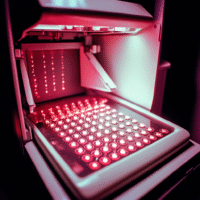Understanding the Trial Results
The study compared two medications, esketamine and remifentanil, for patients with septic shock who needed mechanical ventilation. Here’s what we found:
What Worked?
- Less Norepinephrine Needed: Patients who received esketamine needed less norepinephrine, a medication used to stabilize blood pressure, compared to those who received remifentanil.
- Stabilizing Hemodynamics: Esketamine may help keep blood pressure stable in these patients.
What Didn’t Work?
- No Difference in Survival Rates: There was no significant difference in the 28-day survival rates between the two groups.
- Similar Side Effects: Both medications had similar rates of adverse effects and other outcomes like ICU stay and hospital mortality.
How This Helps Patients and Clinics
This study suggests that esketamine can be a safer option for managing patients with septic shock on mechanical ventilation, as it requires less norepinephrine. This can lead to better management of blood pressure and potentially improve patient comfort.
Real-World Opportunities
- Hospitals can consider using esketamine as a first-line option for sedation in septic shock patients.
- Clinics can train staff on the benefits and administration of esketamine to improve patient care.
Measurable Outcomes to Track
- Dosage of norepinephrine used.
- Duration of mechanical ventilation.
- ICU and hospital length of stay.
- Patient survival rates at 28 days.
AI Tools to Consider
AI tools can help in monitoring patient data and predicting outcomes. For example, AI algorithms can analyze vital signs and medication responses to optimize treatment plans for septic shock patients.
Step-by-Step Plan for Clinics
- Start Small: Begin by introducing esketamine in a few selected cases of septic shock.
- Train Staff: Provide training for healthcare providers on the use of esketamine and monitoring protocols.
- Monitor Outcomes: Track the measurable outcomes listed above to assess the effectiveness of esketamine.
- Evaluate and Expand: Based on initial results, consider expanding the use of esketamine to more patients.


























